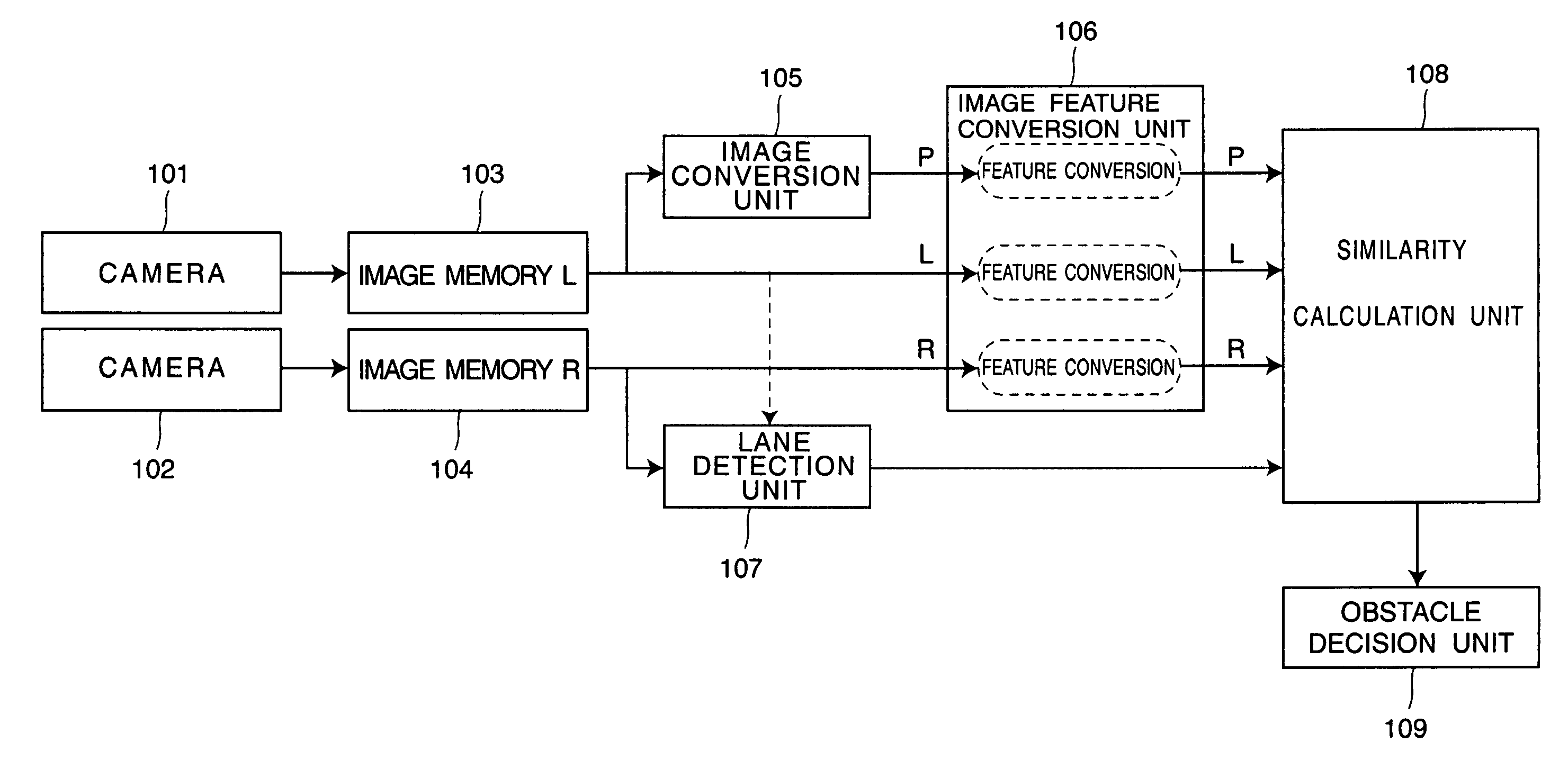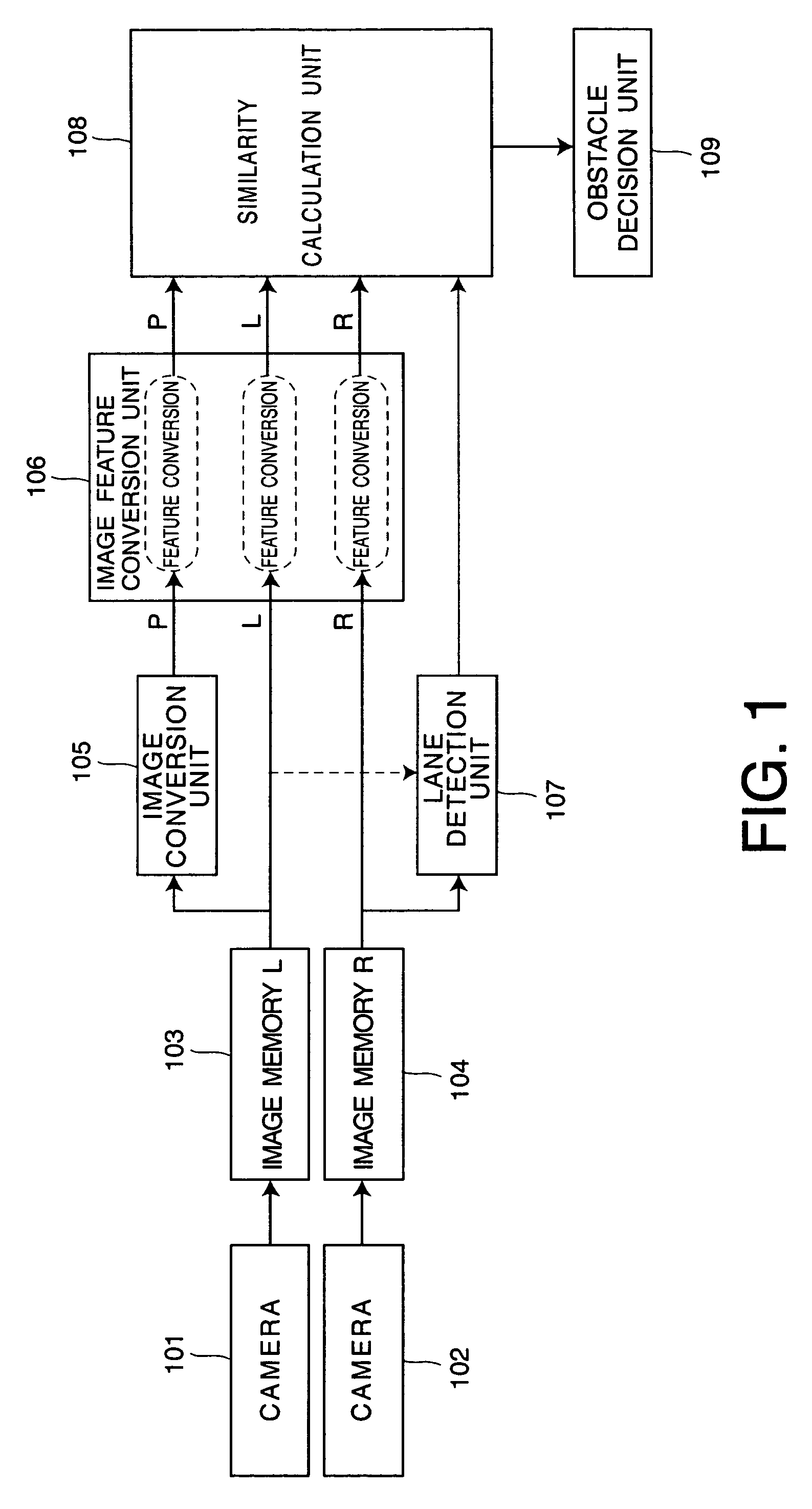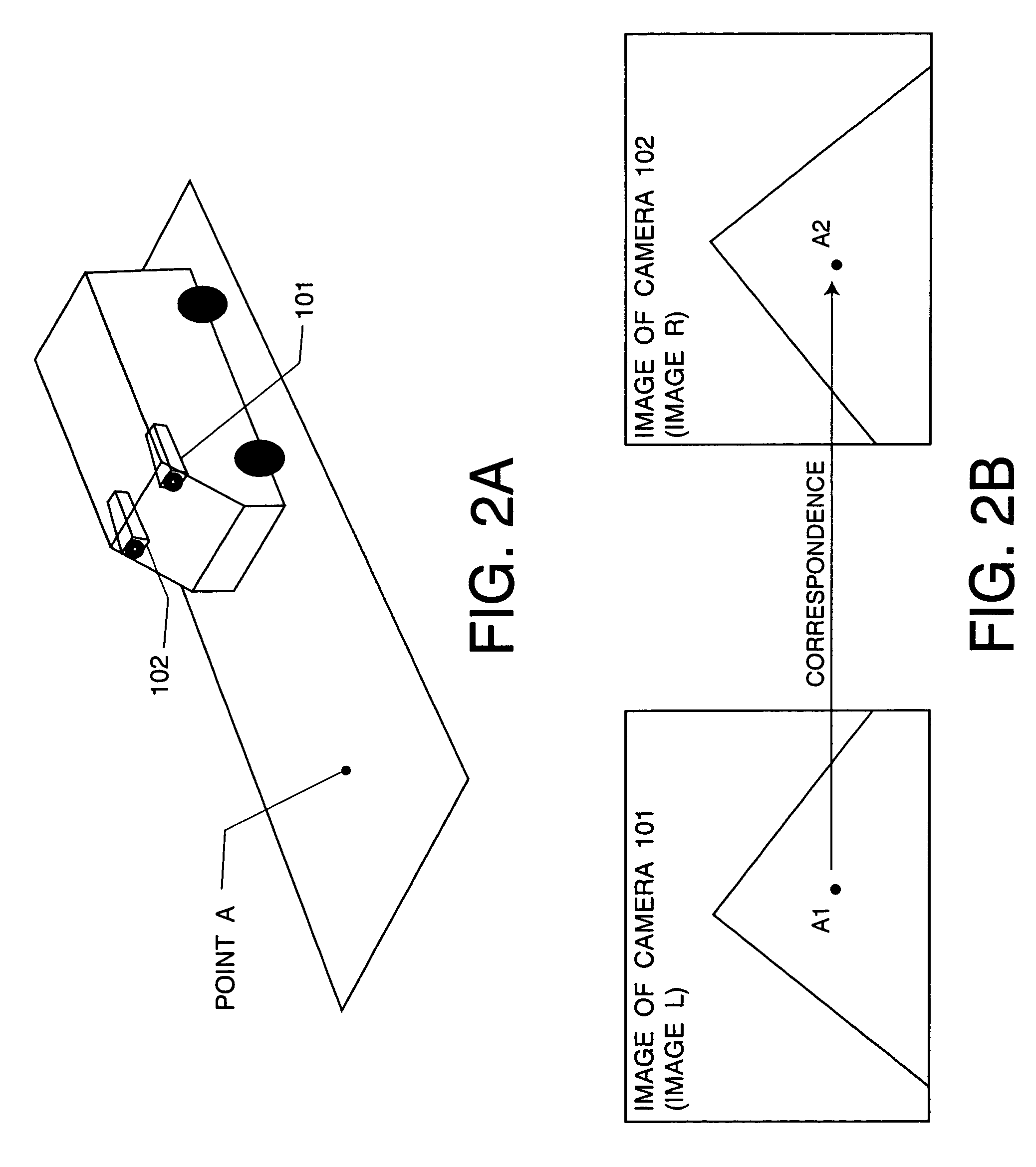Obstacle detection apparatus and method
- Summary
- Abstract
- Description
- Claims
- Application Information
AI Technical Summary
Benefits of technology
Problems solved by technology
Method used
Image
Examples
modification example 1
[0064]FIG. 6 is a block diagram of the obstacle detection apparatus according to modified example 1 of the present invention. In above-mentioned embodiment, feature conversion is respectively executed for the image L, the image R and the image P. However, in this modification, feature conversion is executed for the image L and the image R only, and the feature conversion image L and the feature conversion image R are generated. The feature conversion image L is converted by the image conversion T, and the feature conversion image P is generated. FIG. 6 shows a component of the obstacle detection apparatus to execute each processing in such order. In this component, computation cost for feature conversion can be reduced, and all processing is executed at high speed.
[0065]In general, if an exchange rule is not possible for two conversions (feature conversion, image conversion T), the processing results by two application orders (feature conversion→image conversion T, image conversion ...
modification example 2
[0069]The similarity calculation unit 108 generates a reduced image based on at least one reduction ratio for the image L, the image R and the image P. The reduction ratio is determined by a height, a width, or an area of the processing area. For example, the height and the width of an original image are respectively reduced by a half as the reduction ratio. In this case, an area of the reduced image is a quarter of an area of the original image. The similarity D and the similarity P are calculated for each processing area between two reduced images. By such processing, if a size of the processing area is large, the computation cost can be reduced.
modification example 3
[0070]The obstacle decision unit 109 detects the obstacle from the image by a threshold processing for the equation (7). An equation of the threshold processing is represented as follows. Kth(y)={0K(y)<ThK(y)K(y)≥Th(8)
[0071]However, as shown in graph “K” of FIG. 5C, the graph includes an extension (convex range) of which center is a position of the obstacle. Accordingly, if a following equation is satisfied for a range “y” (00), it is decided that the obstacle is not included in the range “y”. ∑y=0y0Kth(y)=0(9)
[0072]Furthermore, as for a range “y” from “0” to the maximum along y-axis direction, “y1” is searched to minimize a following equation. α∑y=0maxKth(y)-∑y=0y1Kth(y)(10)
[0073]In the equation (10), “α” is a constant (01” may be set as a position of the obstacle. In FIG. 5C, “y1” represents y-coordinate of the base of the processing area 522.
PUM
 Login to View More
Login to View More Abstract
Description
Claims
Application Information
 Login to View More
Login to View More - Generate Ideas
- Intellectual Property
- Life Sciences
- Materials
- Tech Scout
- Unparalleled Data Quality
- Higher Quality Content
- 60% Fewer Hallucinations
Browse by: Latest US Patents, China's latest patents, Technical Efficacy Thesaurus, Application Domain, Technology Topic, Popular Technical Reports.
© 2025 PatSnap. All rights reserved.Legal|Privacy policy|Modern Slavery Act Transparency Statement|Sitemap|About US| Contact US: help@patsnap.com



